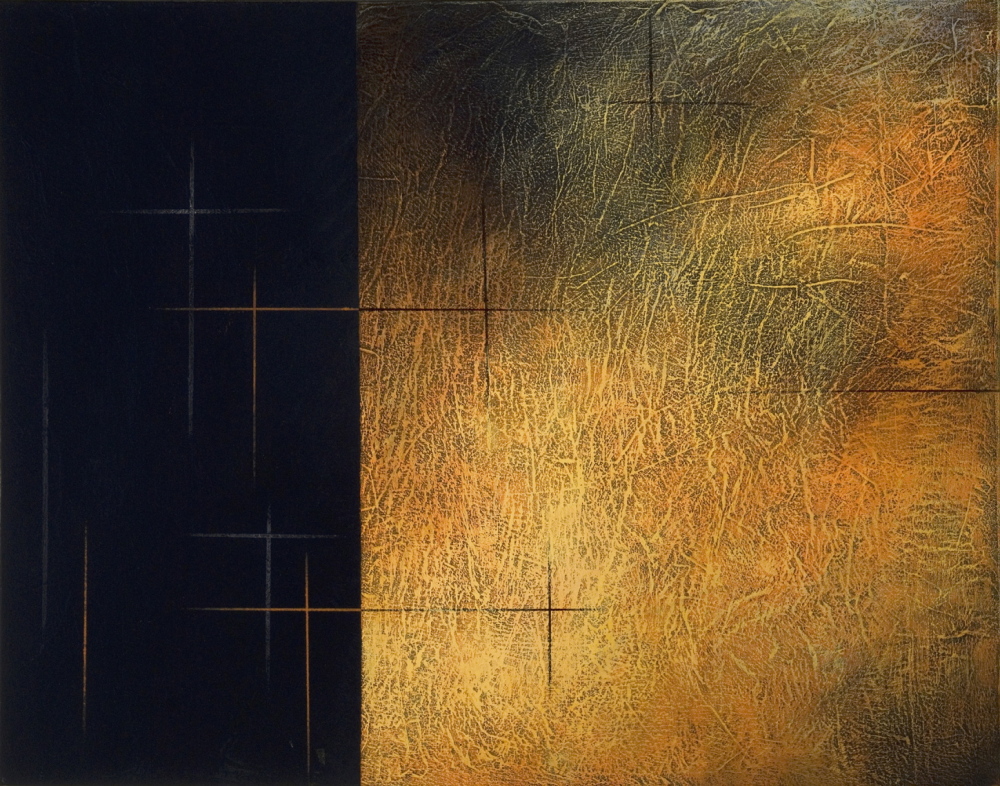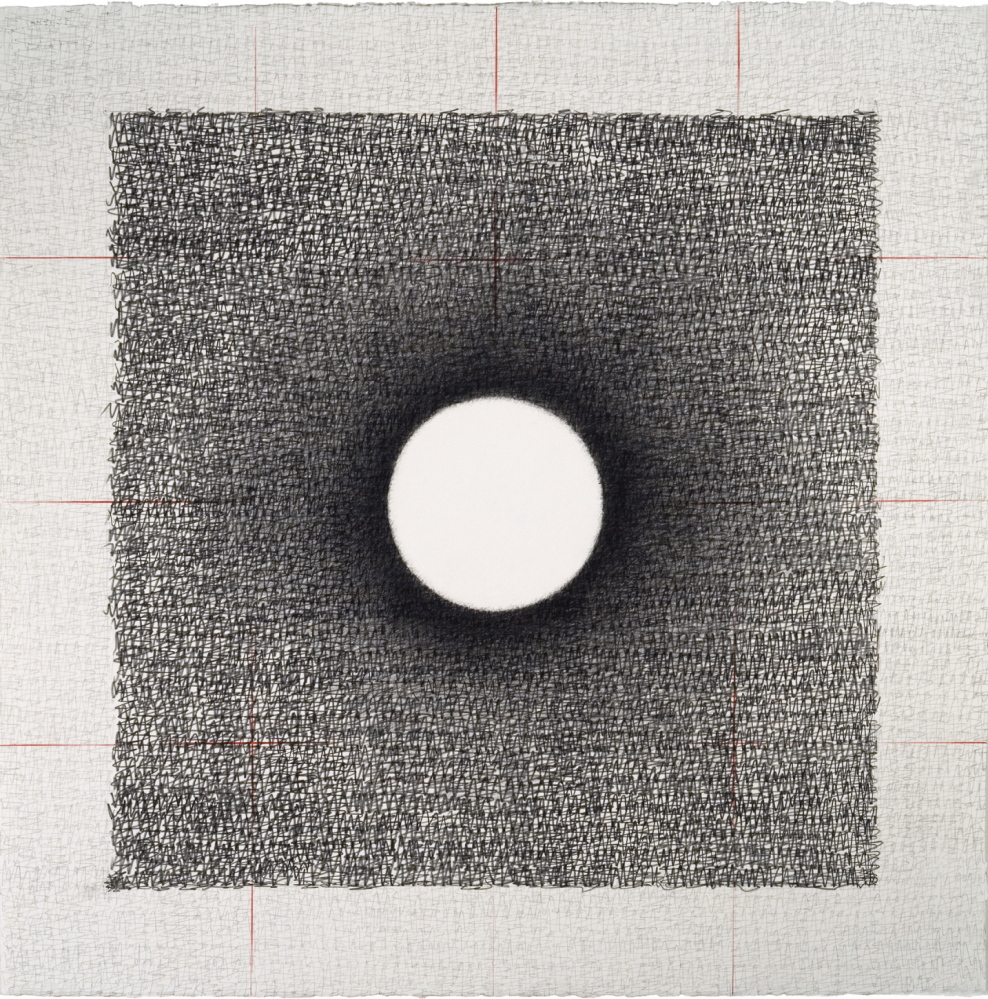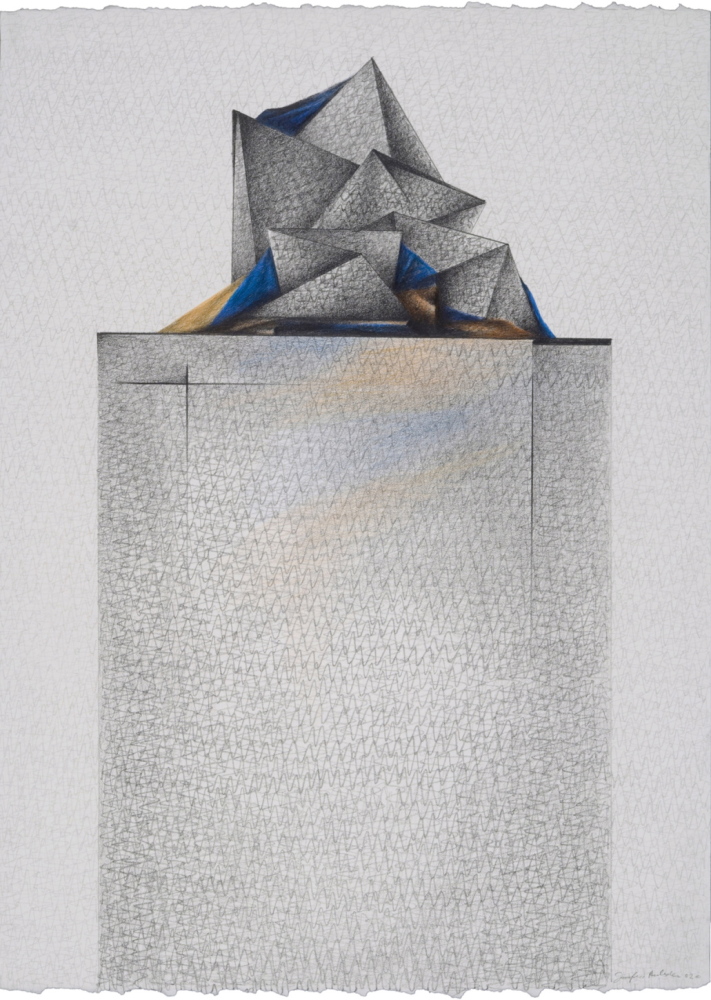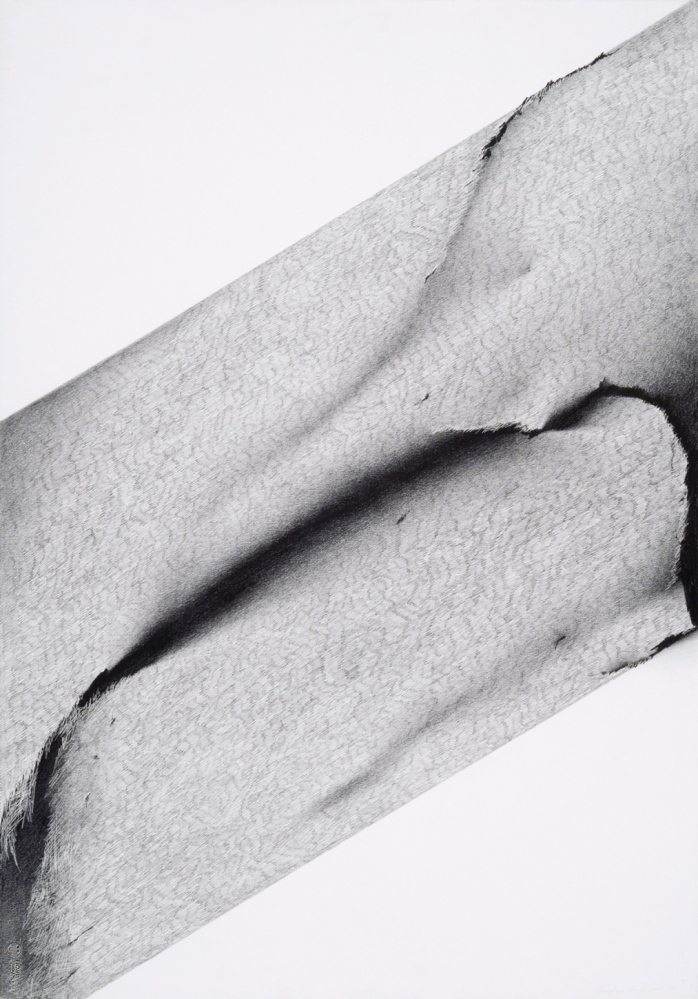Josefina Auslender came to Maine long after developing into a mature and successful artist in Buenos Aires, becoming one of many established artists from around the world who have claimed the state as their home later in life.
What may set Auslender apart is what she brought with her: a more immediate connection to dark and subtle psychological mysteries. Auslender arrived in Maine when Argentina was in turmoil, nearing the end of a period of political strife, secret killings and economic disarray. Her own family had faced threats.
While Auslender’s work doesn’t hide stories or rely on arcane iconography, it is difficult work to understand largely because it addresses these dark issues through stark and often impenetrable forms.
Yet Auslender’s work couldn’t be easier to appreciate: She is a virtuoso with a pencil, and it’s impossible to miss her exquisite draftsmanship.
The first work in “Departures and Arrivals” is a precise and thick diagonal form that falls across the paper with the power of a giant, fallen tree. While its weight and heft are undeniable, the work opens up through some splitting seams, as though covered in disintegrating canvas. As stark, dark and foreboding as it is, these seams offer a ghostly glimmer of hope.
And the closer you look, the more incredible the pencil marks become. Their tight rhythms and textures are so good that they constantly force your brain to question if you are looking at something organic like bone, wood or fabric.
The drawing is from 1985 – two years before political pressures and safety issues drove Auslender and her family from Argentina. The anxieties and fears masked by the dark form are not fictions, but so genuine and deeply experienced that it would be unlikely any artist could get enough distance from them to discuss them objectively.
The title of that drawing series, “Caprichos” (caprices), refers to the great Spanish artist Goya. His series of 80 “Caprichos” published in 1799 is famous for delving deeply into human folly, irrationalism and the horrors of war. Goya was Auslender’s muse, but obliquely, since overt political content could be deadly to Argentine artists and their families following the coup d’etat of 1976.
If you are moved by the power of dark mystery, “Departures and Arrivals” could well be one of the most beautiful visual art shows you will ever see in Maine. Auslender’s skill and ability to tap into a seething subconscious world make for work of undeniable power: It just happens to be power that isn’t particularly friendly.
Many of Auslender’s images comprise very simple forms such as rectangles, grids, circles and squares. Their primary drivers are formalist points about painting like the edges of shapes, flat forms versus volumes, hatching versus line, visual art versus architectural forms, etc. The drawings are not just technically extraordinary, but they make an impressive show of their sophistication.
Auslender uses the grid – a trope of Modernism – both to refer to contemporary art but also as a model for a rational, Euclidian universe off of which she can set our irrational and anxious world.
Underlying her unsettled world view, however, is a human presence brought to the work by the artist’s extraordinary hand. Her hatching is almost too exquisite and her rhythmic backgrounds are often created by what looks like thousands of perfect sine waves – like heartbeats of so many endangered souls. Still, these bits of humanity never conquer the loneliness of what appears throughout her work as the worries of night.
Auslender’s paintings appropriately take a backseat to her drawings in “Departures and Arrivals.” Only two paintings join the dozens of drawings on the first floor of the gallery, while eight more are hung on the top level. While the paintings are generally a bit too stiff for mystery, there are some successes, such as “Night” (La Noche), in which the crosses of the Euclidian grid act more like lens flares we associate with heavenly bodies. This is one of the few works in the show that reveals itself with an easy rhythm. Lighter crosses reach from the dark night side on the left and appear relatively dark in the heavily textured yellow surface on the right. Among so many easy readings, the work feels like a model of the mind in which conscious and unconscious pathways reach into and inform each other.
While Auslender has a uniquely dark sensibility, her work has very strong peers in the Maine art community: Fred Lynch (particularly his early paintings), Bill Manning and even Don Voisine to name just a few.
“Departures and Arrivals” features an impressive body of work. But, while easy to appreciate, it is difficult to engage. In an excellent short film that runs in the gallery, Auslender acknowledges her content is extremely difficult to discuss, so this is clearly how she wants it. While unlikely to be enjoyable for anyone not comfortable with intellectual abstraction or fearful imagery, for many viewers Auslender’s work will be a welcomed challenge. Anyone who values drawing should not miss “Departures and Arrivals.” Auslender can astonish even the most jaded eye.
Freelance writer Daniel Kany is an art historian who lives in Cumberland. He can be contacted at:
dankany@gmail.com
Send questions/comments to the editors.






Success. Please wait for the page to reload. If the page does not reload within 5 seconds, please refresh the page.
Enter your email and password to access comments.
Hi, to comment on stories you must . This profile is in addition to your subscription and website login.
Already have a commenting profile? .
Invalid username/password.
Please check your email to confirm and complete your registration.
Only subscribers are eligible to post comments. Please subscribe or login first for digital access. Here’s why.
Use the form below to reset your password. When you've submitted your account email, we will send an email with a reset code.